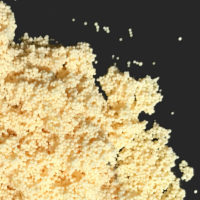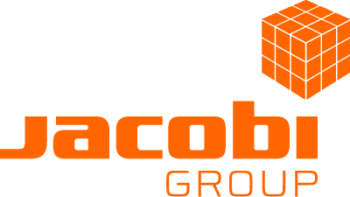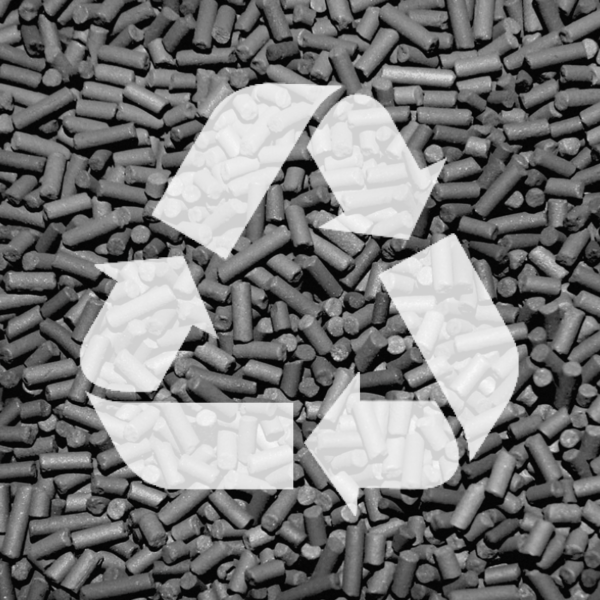The properties of land fill leachate vary widely in composition depending on different factors, such as the age of the landfill, whether the landfill is covered, and the type of waste that is stored in the landfill. Water percolating through the waste will promote an anaerobic microbiological decomposition of organics. This digestion process rapidly consumes any available oxygen creating an anaerobic environment. The temperature will increase, and the pH acidifies quickly due to this anaerobic decomposition of the waste. The decreasing pH will dissolve metals ions that are relatively insoluble at a neutral pH. The leachate is usually collected and treated prior to discharge.
Biogas will also be produced during this anaerobic decomposition of the waste. This biogas is usually contaminated with impurities, such as hydrogen sulphide (H₂S) and siloxanes, that need to be removed prior to combustion for electricity production. The Jacobi Services EcoFlow™ range mobile adsorbers are used to purify biogas or to upgrade biogas to biomethane.
The Jacobi Services mobile filters from the AquaFlow™ range filled with different media are used to treat the landfill leachate at landfill sites. Contaminants that can be found in landfill leachate include:
- Organic contaminants, in most cases expressed as sum parameter such as
- AOX (Adsorbable organic halogenated compounds)
- COD (Chemical oxygen demand)
- Inorganic contaminants
- Heavy metals
The treated landfill leachate needs to comply with the legal discharge limits.
LANDFILL LEACHATE: MOBILE FILTERS
AquaFlow™
The AquaFlow™ range of mobile water treatment adsorbers have been successfully used for landfill leachate water treatment. The filters are selected based on the annual carbon consumption and flowrate. The mobile adsorbers can be operated in a combination of parallel and/or series connection.
LANDFILL LEACHETTE: SOLUTIONS
Auxiliary equipment and additional services
In addition to mobile filters and different media, Jacobi Services also offers auxiliary equipment and additional services, such as:
Selection of the type and number of EcoFlow™ filters. The selection depends on the flowrate and the estimated annual activated carbon consumption.
Media sample pots that are run in parallel with the AquaFlow™ mobile filter. These accelerate the availability of saturated media, such as activated carbon and ion exchange resins, to determine the suitability for reactivation or disposal route of the spent material.
Laboratory testing to determine what the optimum recycling or disposal route is for the used product.
Recycling, Energy Recovery or Disposal Services
The Jacobi adsorbents are used in a wide range of applications. Adsorbents generally have a limited lifetime and need to be replaced once they are saturated or the treatment objective is reached. Jacobi Services offers several recycling, energy recovery or disposal services in different facilities, depending on the properties of the spent material.
LANDFILL LEACHETTE: PRODUCTS
AquaSorb™ 100 Series
The AquaSorb™ 100 series are designed for water treatment, for example, in soil remediation and wastewater projects. This range of products has been used to remove polyaromatic, chlorinated solvent and mineral oils from water in soil remediation projects.
AquaSorb™ ASR-1
AquaSorb™ ASR-1 is an efficient media to remove arsenic compounds from landfill leachate. The arsenic removal efficiency of AquaSorb™ ASR-1 mainly depends on the pH and redox potential of the water and competitive adsorption of other impurities.
ReSorb™
The ReSorb™ range of reactivated pool carbons are used to remove organics from landfill leachate.
LANDFILL LEACHETTE: ION EXCHANGE RESINS
Resinex™ Chelating Resins
The Resinex™ chelating resins can be used to remove heavy metals from landfill leachate. These chelating resins are used to remove heavy metals and work on the principle of complexation. The functional group of the resin is a ligand which forms complexes with the heavy metals cation to be removed from the solution (transition metals). Resinex™ chelating resins can remove heavy metals as cations in water down to ppt level. The choice of chelating resins depends on the type of heavy metal, type of functional group of the resin, other heavy metals in the water matrix and operating parameters of the system.
Resinex™ AP
Resinex™ strong base anions, such as Resinex™ A-4 or Resinex™ AP, can be efficiently used to remove chromates from water, reducing to 10 ppb, with two columns in a serial, merry-go-round system. Due to their large loading capacity (up to 30g Cr/L resin), resins are intended for single use. Besides chromates, other toxic oxyanions, such as molybdate and vanadate, can be effectively removed by Resinex™ strong base anions.
Resinex™ TPS-2300 SO4
Resinex™ TPS-2300 SO4 is a macroporous strong base anion specially designed for uranyl complexes removal in water. The resin being loaded with sulfate, the most attracted anion, the treated water composition will not be changed. Resinex™ TPS-2300 SO4 is exclusively for single use.
Resinex™ A4
Cyanides in water can be found either as free cyanides (CN-/HCN) or as metal cyanides anionic complexes (eg. Zn(CN)42-, Fe(CN)64-). Resinex™ A-4 is a strong base anion which can adsorb metal cyanide complexes. Resinex™ A-4 exhibits a very high affinity for metal cyanide complexes. This means complexes cannot be eluted and the resin is intended for single use.
Resinex™ PR1
Resinex™ PR-1 is a strongly basic macroporous-type anion exchange resin, specially developed for selective perchlorate removal from water in presence of high levels of sulphate. With an inlet concentration of 50 µg/L of perchlorate, the typical Resinex™ PR-1 loading capacity is ± 5 g ClO4-/L resin. With two columns in series, working as a lead-lag system, the outlet concentration is under the detection limit, usually reported at 0.2 µg/L. Resinex™ PR-1 is also suitable for nitrate removal applications. This resin is recommended for single usage.

Resinex™ PFCR-2
Resinex™ PFCR-2 is a special gel type strong base anion resin dedicated to removing perfluoroalkyl substances, even in presence of high levels of sulfate. Resinex™ PFCR-2 is particularly efficient when it comes to eliminating perfluorooctanoic acid (PFOA) and perfluorooctane sulfonate (PFOS). In combination with activated carbon, the resin acts as a polisher by primarily removing short chain perfluorinated compounds, whilst activated carbon fixes longer chain compounds.
GET IN TOUCH
Fill out the short form below and or team will be in touch.






